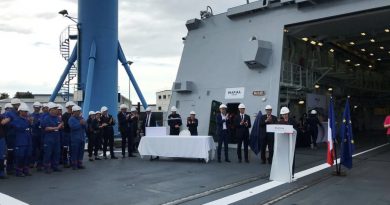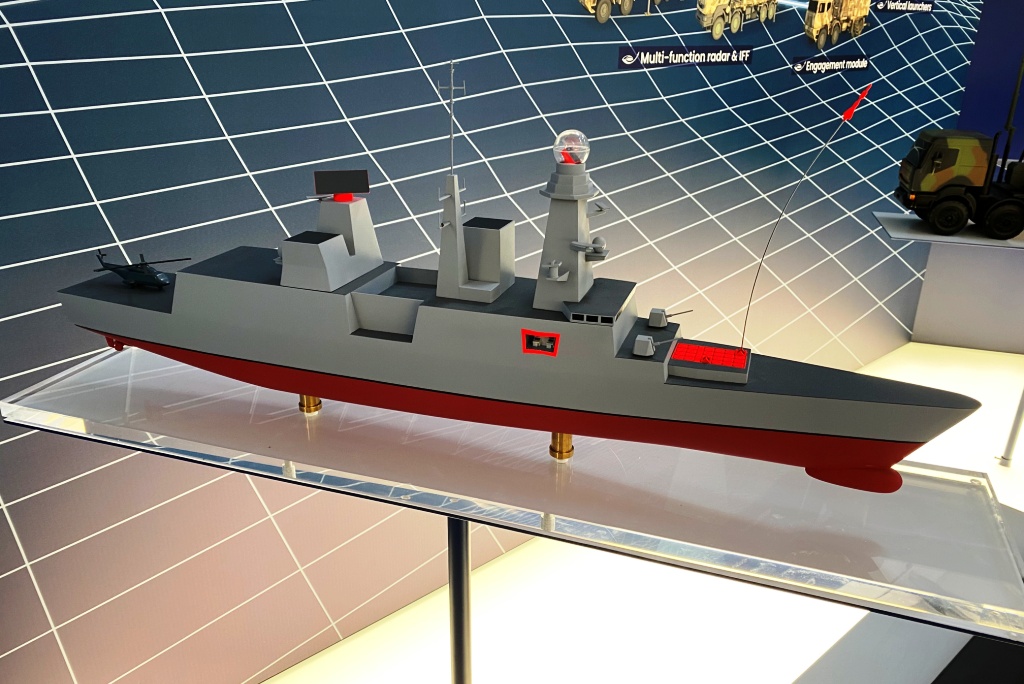
Horizon MLU: the PAAMS & LRR and the EW suite
The two Navies’ Horizon-class combat system MLU common activities are centred on the introduction of a new generation air and missile surveillance and defence system today collectively called Principal Anti-Air Missile System & Long-Range Radar (PAAMS & LRR) and a new EW suite. “The PAAMS & LRR, a unique system installed on four Italian and French frigates, has been successfully employed worldwide for over 15 years in synergy with PAAMS and LRR – UK variant installed on six Type-45 destroyers,” said Eva Bruxmeier, Eurosam managing director during the contract signature ceremony. It includes a command and control suite with two dedicated consoles and related processing system and software, the multifunctional passive 3D C-band radar EMPAR (hence the name PAAMS-E) developed and provided by Leonardo (then Selex Sistemi Integrati) with a single rotating antenna, and the vertical launch system (VLS). The latter includes six Naval Group A50 launcher clusters each including eight cells for a total of 48 ready to launch MBDA Aster 15 and 30 missiles. The PAAMS-E system is sided by the S1850M long-range L-band 3D radar supplied by BAE Systems in cooperation with Thales Nederland.
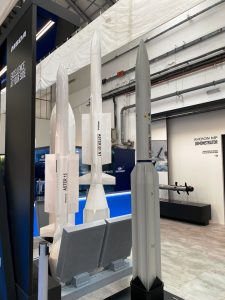
“This new generation of the PAAMS & LRR system for the frigates, developed and manufactured by Eurosam through MBDA Italy, MBDA France and Thales, and integrated jointly with Naviris on the frigates, relies on an enhanced missile (Aster Block 1 NT), an updated launcher, two new AESA radars (Kronos Grand Naval from Leonardo and SMART-L MM/N from Thales) and a new open software architecture command and control system,” Eva Bruxmeier highlighted.
The new PAAMS & LRR and its capabilities will be the result not only of the Horizon MLU contract but also of the developments related to the Sustainment & Enhancement (S&E) programme/contract of the FSAF-PAAMS (Famille des systèmes Surface-Air Futurs/Famiglia dei sistemi Superficie-Aria Futuri – Principal Anti Air Missile Systems) programme. Simultaneously with the Horizon MLU contract signature, OCCAR also awarded two further contracts to Eurosam linked to the latter programme that will provide an increased capacity for the naval Aster 30 Block 1NT. These enhancements take into account the latest naval threats highlighted during the Horizon MLU risk reduction studies and the results of the preliminary definition activities of the PAAMS NG (New Generation) (as the suite is also identified) naval air defence system, managed within the S&E programme.
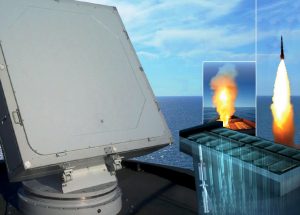
The new generation PAAMS & LRR includes a new command and control system with an open software architecture, new processing and algorithms which EDR On-Line understood come from the experience accumulated in the latest test and operational evaluation campaigns such as Formidable Shield and the technological developments conducted by the two nations and industries and the results of the Horizon MLU, PAAMS NG and SAMP/T NG studies. Being the design authority of the command and control system (with software codeveloped with Thales), MBDA is responsible for the integration of the multifunctional, fully solid state 3D C-band Kronos Grand Naval radar by Leonardo to replace the passive EMPAR. With an AESA antenna and applied GaAs technology, the Kronos Grand Naval uses its multifunctional capability to simultaneously and independently perform surveillance and targets tracking by electronically scanning the beam both in azimuth and elevation, in addition to mechanical rotation. The Leonardo radar is designed as the sole radar on heavy combatant ships with a maximum surveillance range of over 300 km with multi-beam surveillance for optimized dwell-time over full sector with dynamic and adptive beam forming to perform area protection and extended self-defence providing simultaneous multi-tracking capability for active missiles guidance (up to 16 Aster missiles simultaneously).
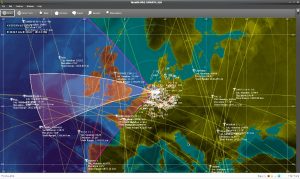
The Horizon MLU also see the adoption of the new MM/N version of the SMART-L long-range surveillance radar operating in D-band. The new version exploits the latest radar developments featuring a fully digital rotating AESA antenna with GaN and ‘dual axis multibeam receiver’ technologies and operational software based on the experience accumulated by Thales Nederland and the Dutch Navy against a variety of demanding targets including anti-ship, tactical and more capable ballistic missiles, in addition to other high speed weapon systems. With a 2,000 km instrumented range gainst ballistic missiles and 480 km against air targets, the SMART-L MM/N is expected to incorporate a new generation IFF with ADS-B (Automatic Dependent Surveillance – Broadcast) capabilities, EDR On-Line understood.
The VLS (with MBDA IT as design authority) will see the introduction of a new generation Firing Unit also known as ITR-A (Installation de Tir Reconfigurable) where ‘A’ stands for Aster. The ITR has been initially developed by MBDA FR (France) in a basic multi-weapon configuration for the new Frégate de Défense et d’Intervention (FDI) Amiral Ronarc’h-class of the Marine Nationale. The VLS will be able to launch the naval Aster 30 Block 1NT as well as current Aster 15 and 30/30 Block 1, both as new and upgraded munitions.
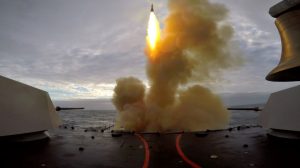
The development phase of the Aster 30 Block 1NT ammunition was launched in 2016, in cooperation between France and Italy through the S&E contract. The B1NT version features a new, more capable weapon control system and a new seeker that operates in the Ka-band, while retaining the same size, mass, and booster of the Aster 30 family, enabling it to be used by all current launchers for both land and naval applications. Developed and supplied by the seeker division of Thales with the support and components of the seeker division of MBDA in Italy, the B1 NT ammunition terminal guidance system together with MBDA’s new weapon control system offer greater range and the ability to acquire targets with a smaller radar cross-section and improved angular resolution for greater accuracy in target location, thus significantly improving the probability of direct impact against high-speed threats such as longer range ballistic missiles also equipped with separable warheads. According to OCCAR, today’s naval munition capability enhancement follows the step of Aster 30 B1NT naval and ground capability extension launched in 2021, continuing to push Aster munition family’s boundaries for much higher performance by incorporating lessons learnt and knowledge of up-to-date threats highlighted during the SAMP/T NG ground air defence system development. OCCAR, Eurosam and the two Ministries of Defence haven’t provided further information about this ‘capability extension’ but EDR On-Line understood the B1 NT incorporates the enhancements developed under the B1NT EC (Enhanced Capability) evolution that are now fused into the B1NT version. Maintaining the same propulsion package, the longer range and higher altitude engagements are obtained through optimized flight trajectories provided by a new software release for the new weapon controller computer, navigational sensors enhancements and new longer-life batteries for both the computer and navigation systems, to cope with higher altitude and longer flight-time.
Thanks to these enhancements and the increased capacity being added through the two new contracts, the new PAAMS & LRR together with the new munition, EDR On-Line understood, will allow the engagement to be carried out stand alone or with designation from other naval platforms or higher echelon of a wide range of current or coming threats in the next decade ranging from further reduced radar cross section to missile of different nature including ballistic such as ASBM, tactical or longer range and according to the joint Eurosam/Naviris press release also hypersonic, in addition to supersonic sea-skimmer, high velocity cruise as well as UAVs and high manoeuvrable aircraft, in a saturation attack scenario.
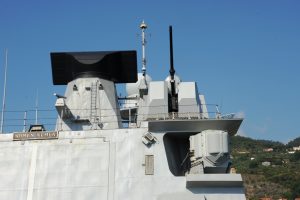
The SADOC 4 CMS will allow the integration of the PAAMS & LRR with the Electronic Warfare (EW), which current RESM/RECM suite is provided by SIGEN JV between Thales and Elettronica (ELT)alongside decoy launchers of different types for each navy, while Thales provides the CESM capability. The same SIGEN JV will provide the new generation EW suite including respectively the digital RESM developed initially by Thales for the Marine Nationale’s FDI platforms and the latest generation RECM developed by ELT for the new Italian Navy platforms. EDR On-Line understood the RECM which employs GaN technology, comes in the more powerful version selected for the Italian Navy’s Trieste-class LHD. ELT will also provide the CESM solution already used by latest Marina Militare projects including the PPA- and LHD-class units. The Italian platform will be also equipped with two Leonardo ODLS 20 decoy launchers for chaffs, flares and the anti-torpedo MJTE (Mobile Jammer Target Emulator) from the same company.
Photos courtesy Italian Navy, Leonardo, L. Peruzzi, Thales


